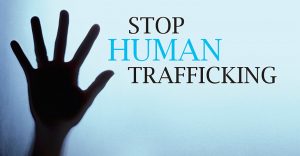Nov
12

Posted by Susan Halpin on November 12th, 2018
Posted in: Blog, Funded Project, NLM Resources, Public Health
Tags: Addiction, human trafficking, prostitution, sexual exploitation, substance use disorder

The following post is written by Nicole Bell, the founder and CEO of the non-profit organization LIFT (Living in Freedom Together).
Nicole Bell and Dr. Marianne Sarkis from Clark University were recently awarded a Community Engagement grant from the New England region. The name of their project is “Trauma-Informed Training for Health Providers, Educators, and Community-Based Agencies to Identify, Treat and Support Victims of Commercial SExual Exploitation and Sex-Trafficking.”
As a survivor of prostitution I cannot tell you the number of times I presented in medical settings only to feel as if I were invisible to those providing care for me. I felt like they blamed me for the violence I was experiencing in prostitution or felt like they were too uncomfortable to have a conversation about my victimization and unsure of what to say to me or where to send me for support.
As the founder and CEO of Living In Freedom Together (LIFT) Inc, a survivor led nonprofit organization dedicated to providing resources, advocacy and support to empower individuals to exit the commercial sex industry I am now fortunate enough to have the opportunity to provide education and training to medical providers and students on identifying and responding to individuals who are being commercially sexually exploited.
Myself and Marianne Sarkis had the idea for the project with the National Network of Library Medicine after conducting many of these educational sessions and being broached with questions regarding intervention techniques for working with victims and survivors of commercial sexual exploitation. Most medical providers agreed they had been seeing survivors but were unsure how to start the conversation and more importantly where to refer to if they did.
We decided to create a tool, with the support of the NNLM, that medical providers could use to not only identify victims, but with tips and strategies for engaging with and supporting victims of CSE. We have done a thorough literature review of what tools currently exist and are tailoring a tool that doesn’t just work to identify victims of sex trafficking but victims of commercial sexual exploitation as a whole.
We have been a part of many educational forums over the last few months and are building partnerships in the medical community that will help us to launch and evaluate our tool.
We are very excited to get a practical guide, utilizing evidence-based approaches into the hands of our medical community so that individuals in prostitution no longer need feel invisible, shamed, or unsupported by their medical providers.